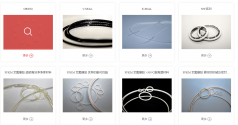Starting from scratch, Shanghai Core Wing Semiconductor Materials Co., Ltd. (hereinafter referred to as Core Wing), located in the Shanghai Bay Area High-tech Zone, has ushered in a good opportunity for rapid development after two years of accumulation from establishment to mass production.
As a key component of the semiconductor industry chain, the perfluorinated sealing rings
produced by Corewing have long been monopolized by major international brands such as the United States and Japan. The degree of localization is extremely low, and it is an absolutely "stuck" key product. Accelerating the realization of domestic "supplementary chain" of core components has become the only way for the development of my country's semiconductor industry.
According to Sun Hu, chairman of Core Wing, Core Wing has always adhered to a development model that is customer demand-oriented and product research and development driven, and continues to carry out technological innovation to provide customers with better products and services. At first, the products independently developed by the team were questioned by customers. After continuous verification, customers gradually recognized Corewing's products, and bulk orders followed .
Due to restrictions on the import of semiconductor equipment and component products, the production capacity of a well-known domestic semiconductor company has been greatly affected. After understanding the situation, Core Wing quickly formed a research and development team, actively formulated solutions for customers, quickly completed product development, production and testing verification, and successfully solved customers' urgent needs .
When cooperating with a leading global semiconductor manufacturer, the manufacturer reported that the imported sealing ring it used did not protect the electronic adsorption disc very well, and there was a phenomenon of falling off. The lifespan was also relatively short, and because it was imported from abroad, the production cycle was long. Greatly affected production efficiency. After analyzing the imported sealing ring, core wing R&D personnel found the crux and proposed a new design plan. After verification and testing, the new product fully meets customer needs. At the same time, the service life is doubled compared with the original imported product, the production cycle is shorter, and the price is lower, which greatly saves costs.
At present, Core Wing has formed a series of product lines such as perfluoroelastomer sealing rings, integrated vacuum valve plates, and Gasket gaskets, which can be widely used in semiconductor, photovoltaic, LCD panel and other industries. In the core design, manufacturing process, and structure of the product Holds multiple patents in other aspects. So far, the company has applied for 38 patents, 21 of which have been authorized by the State Intellectual Property Office. It is expected that the number of patent applications will exceed 50 by the end of this year.



